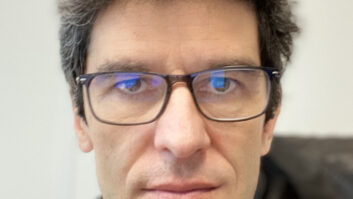The media industry is evolving faster than ever before. Content providers are racing to find efficient ways to deliver video to new digital audiences at scale. Today, market opportunity demands that TV services launch in weeks, not years.
Market acceleration goes hand-in-hand with complexity and risk. We live in a global macroeconomic environment that is both challenging and increasingly hard to predict amid a period of rapid changes in consumer spending patterns, supply chains, labour markets and access to investment. Meanwhile, commercial priorities bump against challenging regulatory constraints. On top of that, media companies need to excel in multiple new disciplines across brand positioning, commercial pricing strategies, and subscriber acquisition and retention. All these factors force media businesses to make frequent strategic course corrections.
Simply put, media companies already have enough to contend with to try and achieve global success and business sustainability. Without smart media services partnerships, technology and operations can become one headache too many. In this rapidly moving, competitive and global marketplace, a ‘build it yourself’ strategy can’t keep up with the pace of change in media. And it incurs considerable cost and risk compared to accessing media services built around economies of scale for infrastructure, technology and, most crucially, skilled people.
Partnering to drive value
Today, media businesses need to operate in a hybrid environment across an ever-expanding set of frontiers, bringing diverse content experiences to growing international audiences – simultaneously – 24/7. Content owners are building out revenue strategies encompassing a mix of advertising, subscription, and pay-per-view models. Companies that have traditionally favoured one approach in home markets are experimenting with hybrid models as they expand globally, including flagship media brands such as BBC Worldwide, DAZN and WWE.
Organisations can harness economies of scale and unlock game-changing efficiencies by sharing assets such as data centres, networks and MCRs, with shared teams working across multiple types of services and business models. This approach fosters better utilisation of staff and content. But it isn’t just about the finished product; the power of brands can extend into new markets through cross-sales and promotion.
Despite being an attractive business theory, the practical challenges of consolidating disparate technology, people and processes to attain your commercial goals are significant. Integrating underlying technology infrastructures and process layers that are managed in siloed units is complex. Skills shortages and the relatively scarce talent pool of people with development expertise alongside a deep understanding of media workflows make this all the more challenging. Recruiting, and perhaps more importantly, retaining skilled staff can be difficult. The cost, complexity and headaches involved during consolidation processes are too much to contend with and can cause media organisations to fall behind the technology curve.
An agile technology strategy
Technology estates demand continuous care, attention, and investment. Our industry evolves at a frightening pace. Technology is only fleetingly ‘state of the art’ and requires continual maintenance, replacement and upgrades that only increases until the next investment cycle. Throughout this time, technical performance and functional limitations can hamper a media organisation’s ability to meet its business goals. The predictable shift away from traditional hardware solutions to more flexible software platforms can render existing expertise redundant and leave businesses in need of new talent with different skill sets.
Business agility enabled through technology upgrades is fundamental to seizing new opportunities in a fast-moving and, oftentimes, unpredictable market. And with change around every corner, highly integrated internal technology can become an impediment to growth due to the domino effect one change can exert across multiple areas. Yes, businesses must stay ahead of the technology curve – that’s paramount – but the burden of managing that task, and the considerable infrastructure stack that comes with it, can slow organisations down and draw their eyes away from what matters most to audiences: content and creativity.
Eyes on the prize
Working with a media services partner means media companies can keep their focus on content and creativity whilst technical delivery, support, security and a whole host of non-core activities can be delivered as a service.
Navigating increased complexities and unpredictability in media and entertainment can be daunting. However, a media partnership approach isn’t just about reducing operational challenges and ensuring broadcasters have one less hurdle to overcome. It’s about adding value, empowering growth, and fuelling new opportunities through best-in-breed infrastructure, continually evolving technology, and some of the most talented people in the industry.







